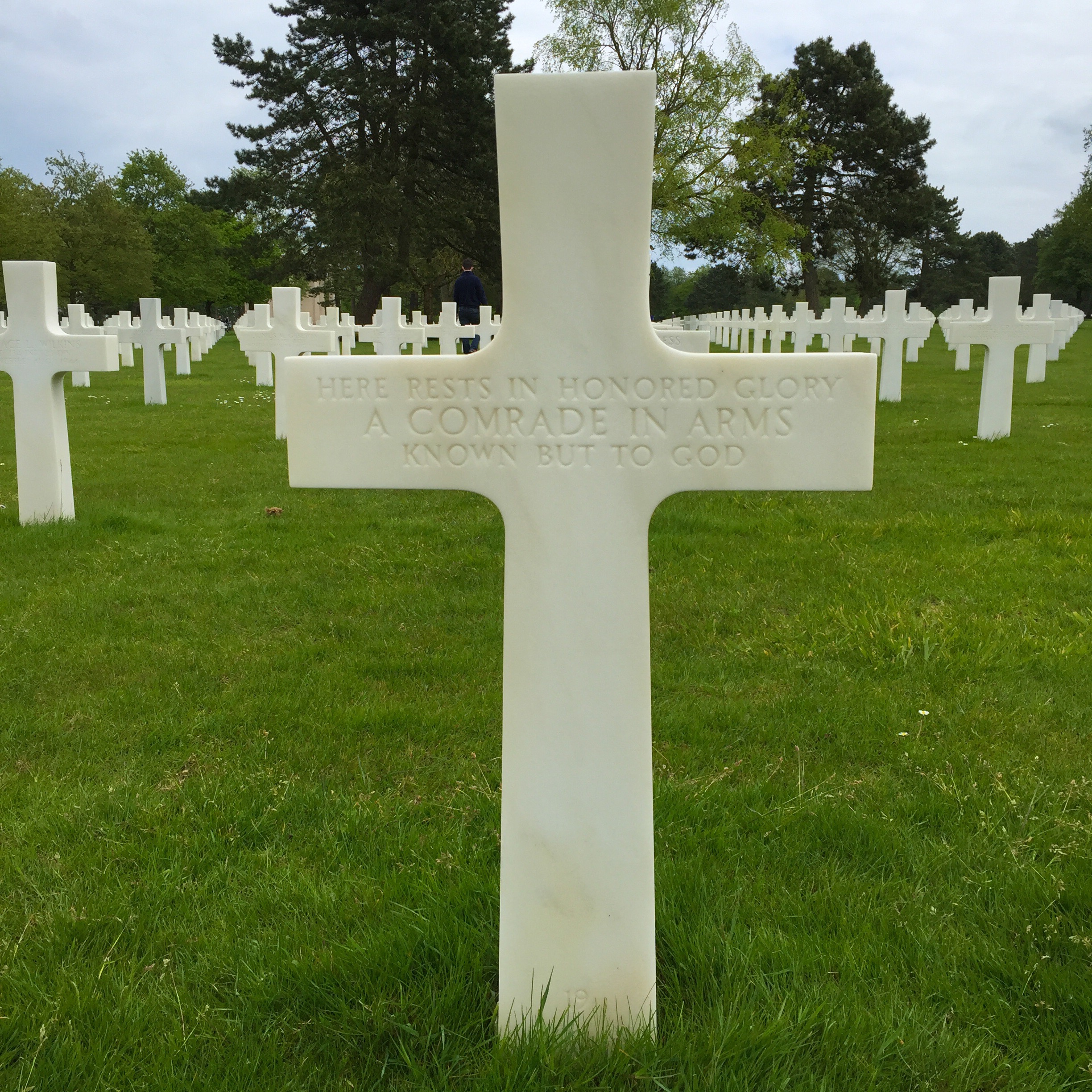I’m not ashamed to tell you that I cried here in France. We visited the American cemetery in Normandy, which is an experience I won’t soon forget. By the time of my writing, we’ve visited the American, British, and German cemeteries, but as an Ohioan the American hit especially close to my heart. I wrote my final paper for our study-abroad prep class on whether World War II was “A ”good” war, or a bad one. ” Of course war is never “good,” but I argued the ends justified the means, although military bureaucracy sometimes forgot individuals in a sea of numbers.

“Spirit of American Youth Rising from the Waves” bronze statue at the American Military Cemetery, Normandy.
As I walked down the steps of the main monument, that’s what I saw: a sea of numbers. These numbers, however, were not numbers. They were men, but they were also boys with hopes, dreams, fears; sometimes they were letters hand delivered by a solemn man dressed in uniform, and countless lives with potential ended too short and often in loneliness. I walked down countless rows of white crosses and Stars of David, my sadness growing heavier the further I trekked in. What struck me incredibly hard were the countless graves dedicated to unidentified soldiers. The gravity of a nameless grave deprives the soldier of proper remembrance and leaves the family with a painful lack of closure. I wanted to pay my respects to each one of these, but I don’t think all the time in the world would be enough.
It took me 614 steps, almost seven minutes, to walk from the last grave row back to the first. I know this, because I was surprised at the size of the cemetery that I decided to walk it and count. Seven minutes of markers and seven minutes of lost lives. The 9,000+ graves made me question whether it all had been worth it. I cried as I saw each grave as a family mourning the loss of their son, and as a son losing his life thousands of miles away from his family. The pain they must have felt clouds an argument of WWII being a “good war.”
This illustrated something described to me, but that I’ll never see. As we walked the beaches of Omaha, I remembered the piece by Ernie Pyle, “A Long, Thin Personal Line of Anguish.” In this, Pyle describes the beach shortly after the invasion by noting the personal artifacts (a Bible, tennis racquet, writing paper, among other things) of the soldiers who died there. He speaks of the human wreckage directly, too, and even mentions an instance when he mistakes a man’s feet in the sand for driftwood. We had discussed the intention of Pyle’s essay in class, but I struggled to see the poignant details across what is now such a peaceful beach. I had to imagine bodies that would have been strewn about along the coastline, with their personal artifacts as remnants of individual memories. Remembrance in this way makes war seem like such a waste, no matter how just the cause. The American cemetery to treats the fallen soldiers with honor, and yet, the uniformity of the headstones suggests the treatment of soldiers as simply cogs in a bigger machine. In contrast, the headstones of the British cemetery we visited displayed the age, name, and division of each soldier, and even included a short inscription written by their loved ones. I found one in particular that exemplified anguish that comes with individual recognition: “To the world, he was but one of many. But to us, he was the world. ” Still, I could see the individual GI’s in the names carved in the alabaster headstones.
In a place that is meant to be sacred, we found the noisy French schoolchildren to be a nuisance. As I thought about it more, however, it dawned on me that had these men not fought in this “terrible” war, these children, would not be standing here today. It was their sacrifice that ensured the continuation of our values, and as the sea of visitors suggests, their efforts are appreciated and not forgotten. Even this disrespectful school group represents continuing gratitude towards these soldiers. I think the French acknowledgement of these events is not only touching, but is a testament to the impact of the American effort. Certainly, it comforts me to know that the ho efforts of our honored dead were not in vain. I feel more grateful to these heroes than ever before.


